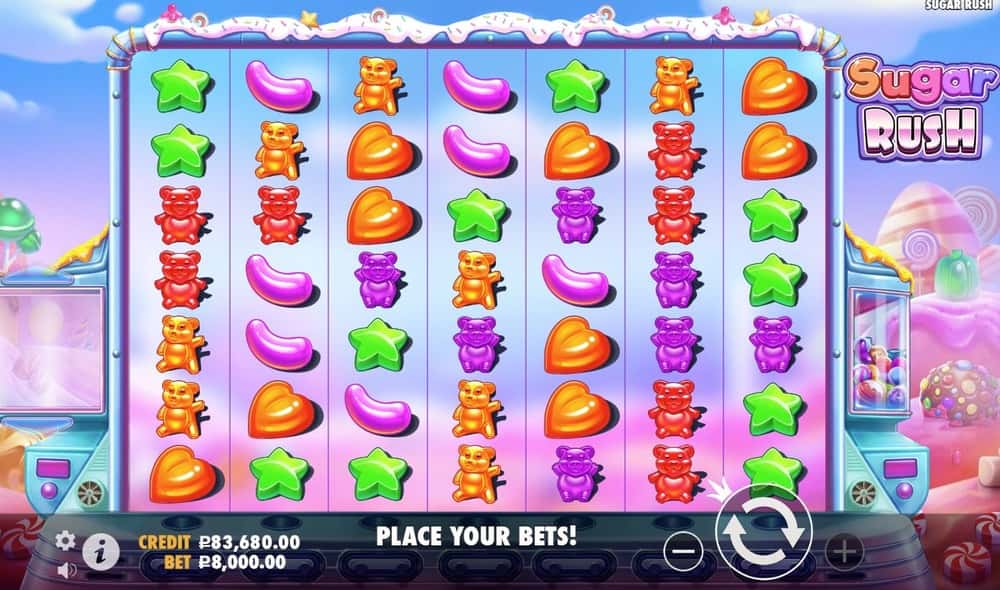
When deciding where to play at online casinos, RTP is a metric every player should understand. It, which stands for Return to Player, indicates how much money a game pays back over extended play. While it doesn’t guarantee wins in the short-term, return percentage offers insight into game profitability. In this guide, we’ll cover everything you need to know about RTP at online casinos.
What is RTP?
It refers to the percentage of wagered money a casino game pays back to players over time. Expressed as a percentage, it represents the theoretical expected return across many rounds of play. For instance, a game with a 95% RTP will give back $95 for every $100 wagered, while one with 90% RTP gives back $90 per $100 bet.
Definition
RTP gives transparency into game fairness and profit potential. It is the opposite of house edge – the mathematical advantage favoring the casino. While short-term returns vary due to luck, return percentage indicates average long term payouts. Higher RTPs signal better odds for players.
How It is Calculated
RTP formulas are straightforward:
- Return to Player = Total payouts / Total bets
However, accurate RTP requires a sizable sample of outcomes. Reputable gaming labs and regulators analyze return percentage across tens of thousands of rounds to ensure statistical significance. Calculating long-term RTP by hand is unrealistic for players. Thankfully, most legit online casinos display verified theoretical RTPs upfront.
Importance for Players
RTP acts as a guide to game profitability over extended play. While it does not guarantee immediate winnings due to randomness, comparing percentages helps identify options likely to earn better returns. Monitoring changes prevents unfair odds shifts. Fortunately, most legal online casinos show proven theoretical values right away.
Finding Reliable RTP Information
With hundreds of gambling sites competing for attention, determining fair odds requires a critical eye. Reputable online casinos, like 8888 Casino, submit their products for independent testing to prove fair RTPs through groups like eCOGRA. Players should verify current eCOGRA seals confirming ongoing compliance evaluations. Published payout reports that list RTPs for all games also build trust. Recent certificate dates additionally signal regular oversight is in place.
RTP Across Casino Games
Return percentage can fluctuate widely across different casino game types. Generally, RTPs cluster based on genre – slots, table games, and other specialty ones have typical value ranges.
Slot Machines
Slots showcase the widest RTP spreads in casinos. Land-based slots commonly offer between 70% to 80%. Their online counterparts significantly improve players’ chances: slots average between 90% to 99 %.
Slots with high percentages offer more consistent small payouts, while slots with low percentages offer larger but irregular jackpots. High variance slots also carry more volatility and risk, despite similar average RTPs.
Some online slots with strong RTPs include:
- 1429 Uncharted Seas (Thunderkick) – 98.6%
- Pumpkin Patch (Habanero) – 98.18%
- Sushi Bar (Betsoft) – 97.5%
- White Rabbit (Big Time) – 97.7%
Table Games
They generally have higher average returns compared to slots. A few examples:
- Blackjack – 99.5%
- Baccarat – 98.94%
- European Roulette – 97.3%
- French Roulette – 98.65%
Additionally, skilled play using optimal strategy can further improve return percentage in blackjack, video poker, Casino Hold’em and other titles involving decision-making.
Other Casino Games
Specialty games cover a broad spectrum for RTP:
- Video Poker: 99.54% (9/6 Jacks or Better)
- Craps: 98.6%
- Keno: 70% to 90%
- American Roulette: 94.74%
Games like craps and video poker offer multiple bets spanning a wide RTP range. Players should focus on options with highest returns. Conversely, fast-paced ones like keno and American roulette provide a lower expected payout.
Comparison of Top Games
Let’s analyze RTPs across a few of the most popular titles:
| Title | Return to Player |
| Mega Moolah (Slots) | 88% – 93% |
| Starburst (Slots) | 96% |
| Jackpot Deuces (Video Poker) | 100.76% |
| Extra Chilli Megaways (Slots) | 96.82% |
| Fishin Frenzy (Slots) | 96.1% |
This surfaces a wide spread between 88% up to over 100%, highlighting inherent differences baked into game rules and odds. While slots like the hugely popular Starburst hold reasonably fair RTPs of 95%+, some progressive jackpot games trade overall lower payout rates for life changing prizes. Table games on average run over 98% returns. And optimized video poker strategies can even achieve above 100% RTPs.
Checking these percentages for top titles allows players to compare game profitability at a glance. While short term results rely on luck, RTP indicates which options offer fundamentally better or worse odds over tens of thousands of hands. Considering values for specific games empowers advantage players to make informed choices aligned with their preferences.
Factors Influencing RTP
While return percentage acts as an overall indicator of payouts, several elements can shift the scales. Uncovering these allows players to slightly improve their odds.
Rules and Odds
One driving factor is the foundational gameplay and odds. Small tweaks make large RTP differences:
- European Roulette (97.3%) vs American Roulette (94.74%)
- Blackjack (99.5%) vs Blackjack variants like Spanish 21 (95-96%)
When options exist, seasoned players pick rule set variants favoring the player. Over time, these extra 2-3% advantages compound significantly.
Bonuses and Promotions
Bonus funds count as free money, lowering effective RTPs. Reload bonuses, cash back, and loyalty perks contribute to player returns:
- Match bonuses effectively double deposits, improving return percentage
- Free spin awards provide risk-free plays
- Cashback returns 5-15% of net losses
However, bonuses come with sticky terms. Players should account for wagering, game restrictions, and other rules tempering their benefits.
Strategy and Skill
In skill-based offerings like blackjack, video poker and poker derivatives, seasoned play pushes RTP higher through informed decision making:
- With basic blackjack strategy, this rate approaches 99.5 per cent
- Optimal video poker strategy guarantees >100% returns
- Poker pros overcome base game odds of ~97%
Conversely, bad plays leak money – like always standing on 17 during blackjack. Mastering relevant skills pays, literally.
Casual table game players see reduced percentage from unstructured play. But it takes significant practice to reach expert-level strategy. For most, bonuses provide easier RTP improvements than hardcore skill development.
Variability and Volatility
While return percentage indicates overall payouts, variance determines how wild or stable returns will be. Understanding their interplay is vital when picking slots.
Role of Variance in RTP
Every game features innate variability in results – some slots churn out steadier small wins, while others provide huge but infrequent payout spikes. High variance equates to bigger but more inconsistent rewards.
Over extended play, RTP expectations still hold due to the law of large numbers. Short term however, high variance augments oscillation around the mean – your outcomes will likely swing harder between big wins and losses.
Managing bankroll amidst these choppy seas requires adjustment of bet sizing and session length compared to lower variance alternatives. Volatility directly impacts playing experience.
Difference Between RTP and Volatility
Return to Player and volatility are easily confused but know their contrasts:
| Factor | Return to Player | Volatility |
| Timeframe | Long term | Short term |
| Definition | Payout rate | Reward stability |
| Expectation | Consistent | Fluctuates |
| Basis | Game rules | Player experience |
While RTP predicts overall expected return, volatility indicates the smoothness of rewards over a playing session:
- Return to Player – Steady pace over thousands of spins
- Volatility – Rocky rollercoaster in the moment
Neither fully dictates the other. A 96% RTP game may shower users with small frequent payouts or fewer but larger jackpots. Checking both RTP and variance provides the complete picture. Return to Player targets efficiency, volatility targets enjoyment. Players balance both when finding titles matching their preferences.
Finding Reliable RTP Information
With hundreds of gambling sites competing for attention, determining fair odds requires a critical eye. Reputable online casinos submit their products for independent testing to prove fair RTPs through groups like eCOGRA. Players should verify current eCOGRA seals confirming ongoing compliance evaluations. Published payout reports that list RTPs for all games also build trust. Recent certificate dates additionally signal regular oversight is in place.
FAQs
What constitutes a good return percentage?
Most players see 95%+ as a generally good score. Land-based slots start around 70%, so 95%+ marks a significant player advantage. That said, ranges vary by product so no definitive good/bad thresholds exist. Checking specific game RTPs is recommended rather than assuming standards.
Does a higher percentage guarantee a win?
No, higher return percentage only suggests greater earnings potential over extended play encompassing variance swings. Due to randomness, a player is not guaranteed better results across nor during any one session at higher RTP games. Return to Player solely looks at overall earnings projections rather than predicting individual outcomes.
Can I trust the return percentage advertised by online casinos?
Reputable licensed casinos must submit their products for RTP testing by independent labs. Players should verify certification from eCOGRA or similar testing bodies, which require ongoing audits to confirm fair odds. In the absence of real verification, the odds offered in the market may be questionable or outright false.
Should I only play high RTP casino games?
They offer inherently better odds from a profit standpoint. However, factors like volatility and enjoyment matter significantly too for players. In many cases, lower RTP jackpot slot titles see immense popularity due to life changing prizes despite lower overall payout rates. RTP should be weighted along with other elements by players rather than considered in isolation.
Can I improve my percentage as a player by playing online?
A small improvement is achieved through bonuses that increase your total funds, optimal skill-based strategy, and reduced house edge through favourable play and betting rules. However, in the long run, you will not be able to beat the published fixes.
